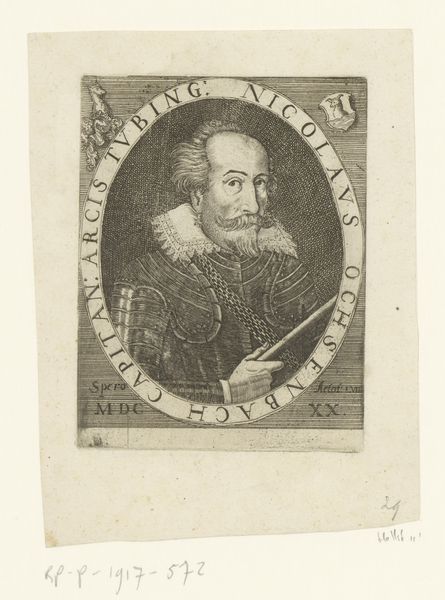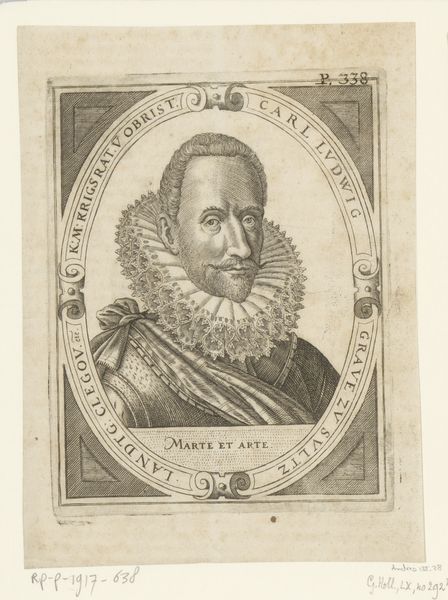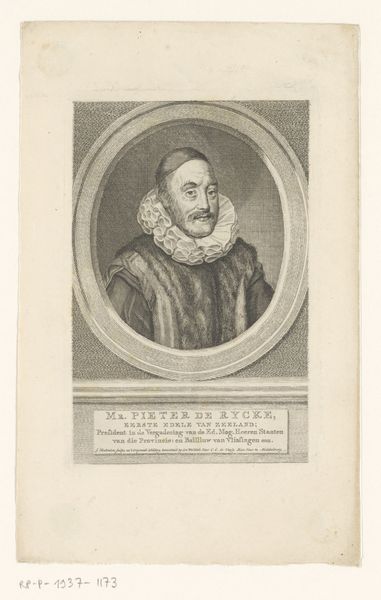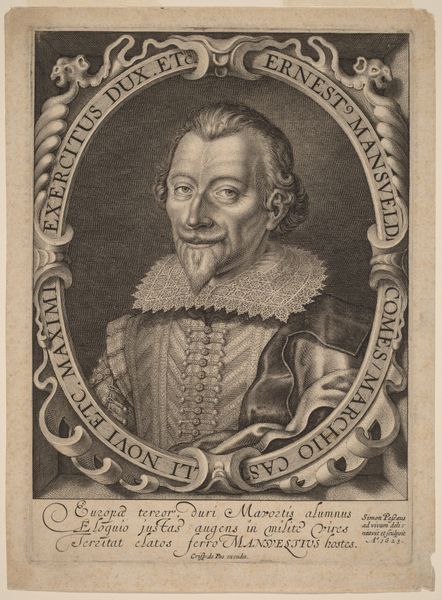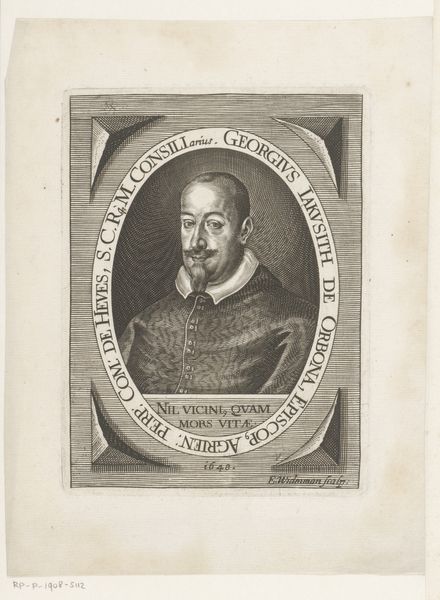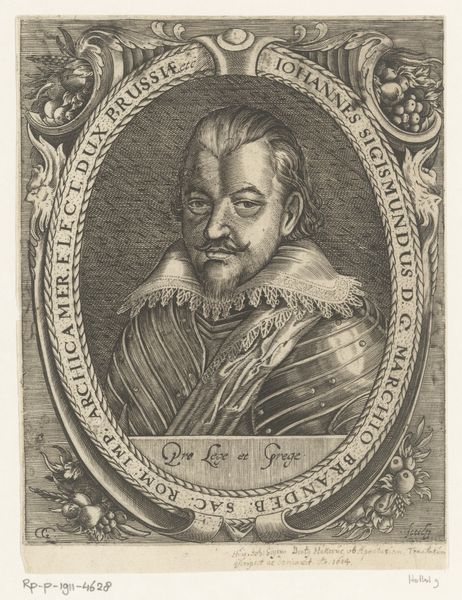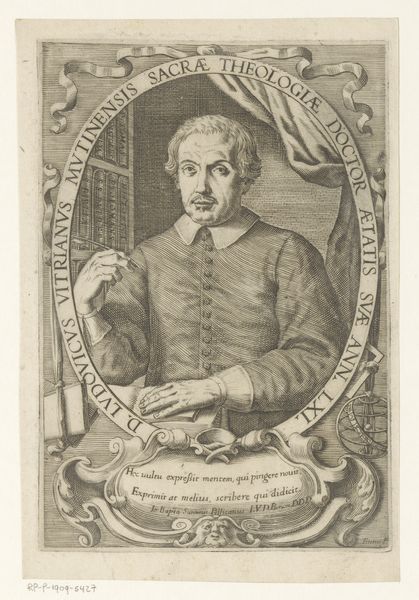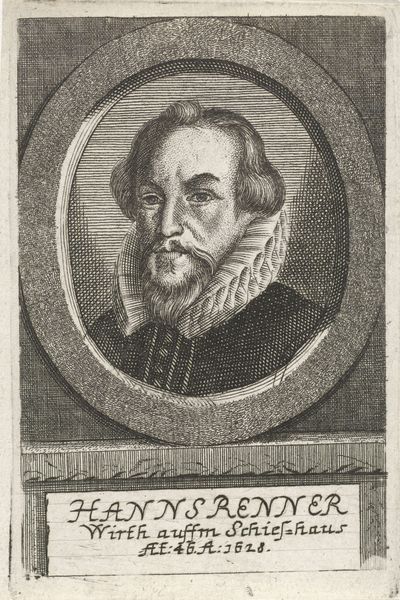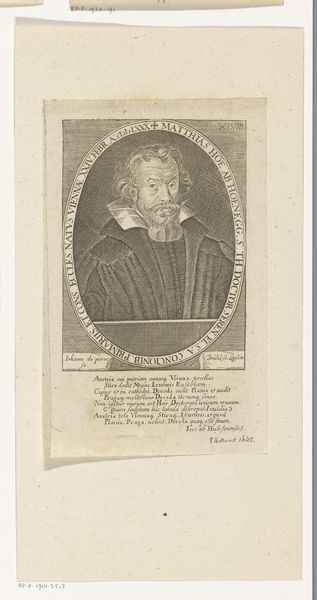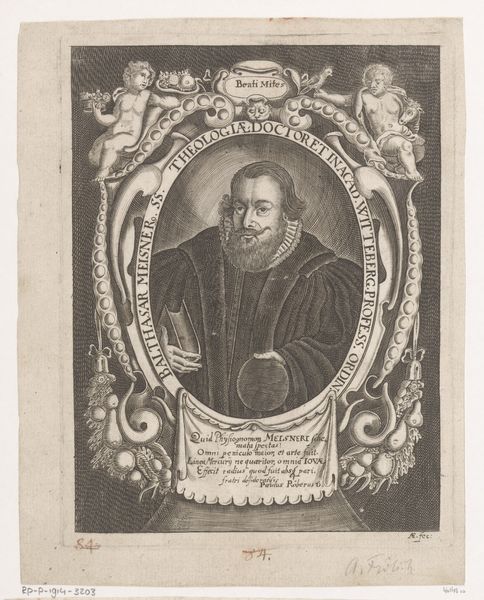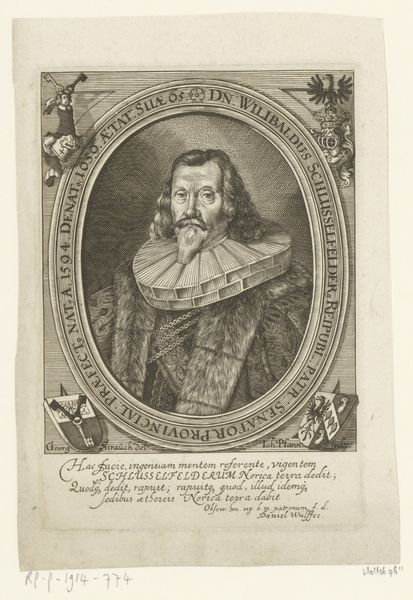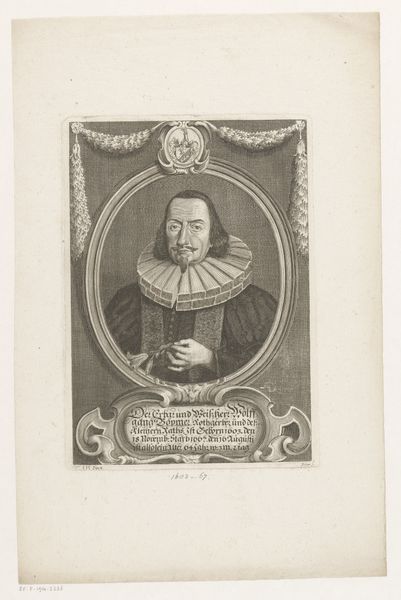
print, engraving
#
portrait
#
baroque
# print
#
history-painting
#
engraving
Dimensions: 142 mm (height) x 111 mm (width) (plademaal)
Editor: This is a print from 1616 by Simon de Pas, titled "Aaron Rathborne." It's a portrait, seemingly an engraving, with a rather intense mood given the intricate details and rather stark lighting. I'm curious about its historical context. What do you see in this piece beyond just a portrait of a man? Curator: It's tempting to simply see it as a period portrait, but let’s dig deeper into its cultural and political resonances. Rathborne was a land surveyor, a profession tied to power, ownership, and often, displacement. This engraving, framed with tools and Latin inscriptions, is very deliberately constructing an image of authority. Editor: Authority, yes, I can see that in his direct gaze. What about the Latin inscriptions? They seem important, but I am not sure how to interpret them. Curator: They contribute directly to that construction. "Anno Salutis Nostri 1616. Qui In Me Vivit Pro Me Mortuus Est," translates roughly to "In the year of our salvation 1616. He who lives in me is dead for me.” How do those words resonate, given the historical context? The language evokes sacrifice, maybe even linking his profession to some higher, perhaps divinely ordained purpose. How complicit might such individuals have been within a system that disproportionately benefited the wealthy landowners at the expense of the rural populace? Editor: That reframes the image entirely. I had focused on the individual, but considering the land surveying within the wider scope of power dynamics... It gives me chills. It really calls into question the role of individuals in upholding systems. Curator: Exactly. It urges us to question how individual actions contribute to larger social structures. And how seemingly neutral professions were deeply entwined with the social hierarchies. Editor: I am starting to see prints not only as artwork, but also social documents that allow insights into social values and conflicts. Thanks for shifting my perspective. Curator: And thanks for being willing to interrogate comfortable assumptions! Seeing art this way pushes us all to be more critical.
Comments
No comments
Be the first to comment and join the conversation on the ultimate creative platform.
